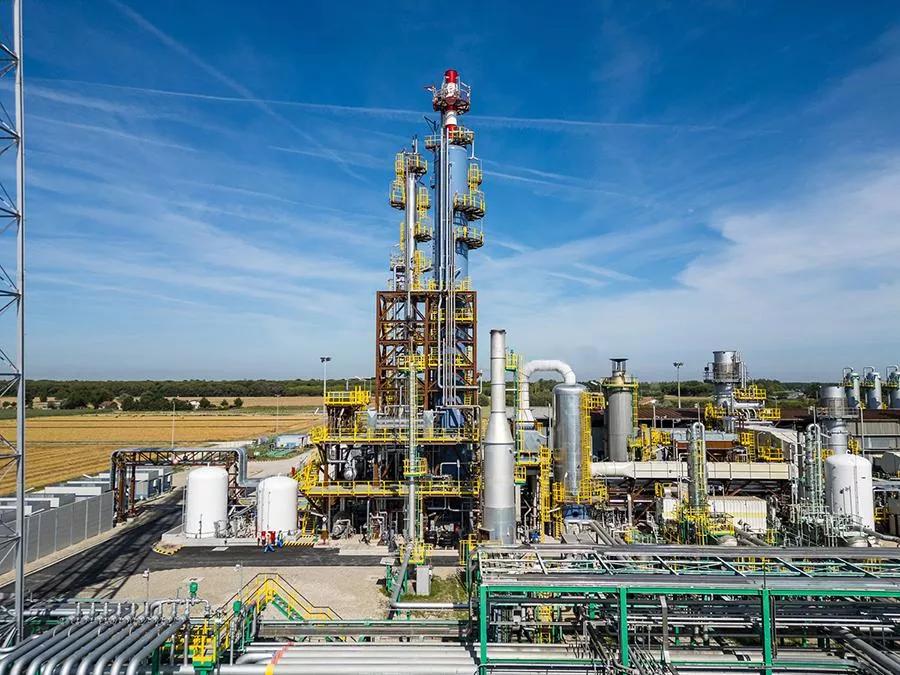Mitsubishi Heavy Industries Deploys Carbon-Capture Tech at Ravenna CCS Project
The KM CDR capture process treats low-CO2 flue gas from a natural gas turbine driving a turbocompressor to lower emissions by 90% with peaks of 96%.
Mitsubishi Heavy Industries (MHI) deployed its carbon-capture technology—the KM CDR Process—to remove approximately 25,000 tons of CO2 per year at a fully operational post-combustion carbon capture plant. The facility, located in Ravenna, Italy, is part of the Ravenna Carbon Capture and Storage (Ravenna CCS) project launched by Eni and Snam.
KM CDR was installed at Eni’s Casalborsetti natural gas treatment plant by NEXTCHEM, the project’s technology integrator, while KT Integrated E&C Solutions completed engineering, procurement, and construction works at the site. MHI delivered the process design package and is licensing the technology. At the plant, MHI’s carbon-capture process treats low-CO2 flue gas from a natural gas turbine driving a turbocompressor. With CO2 concentration levels less than 3% and low atmospheric pressure in the exhaust, the technology is reducing CO2 emissions by 90% with peaks of 96%.
“What MHI's carbon capture technology has achieved through this project marks a milestone and paves the way for future carbon emission reductions across the industry,” said Tatsuto Nagayasu, MHI's Senior Vice President of Green Transformation Solutions. “It also supports the CCUS goals set by Italy and Europe. The successful deployment of our CO2 capture technology at Europe's first fully operational post-combustion carbon capture plant for CO2 storage demonstrates the versatility and effectiveness of our technology. Through partnerships like these, we are strengthening MHI's position in carbon-capture solutions and driving the global energy transition forward.”
Carbon capture plant at Ravenna CCS; Image Credits: Eni S.P.A.

MHI developed the KM CDR Process and the Advanced KM CDR Process in collaboration with Kansai Electric Power Co., installing the technology on 18 total plants. The Advanced KM CDR Process uses the KS-21 solvent, featuring:
- Technological advancements over the amine-based KS-21
- Improved regeneration efficiency
- Lower deterioration
- Energy-saving performance
- Low amine emissions
- Reduced operational costs
Ravenna CCS, developed exclusively to mitigate environmental impact, is Italy’s first project to capture, transport, and permanently store CO2. Captured CO2 is transported through repurposed gas pipelines, then injected and stored at 3,000-meter depth in Eni’s Porto Corsini Mare Ovest depleted offshore gas field. During Ravenna CCS Phase 2, further industrial-scale development will enable storage of up to 4 million tons of CO2 annually by 2030.
Other MHI News
In late August 2024, Mitsubishi Shipbuilding—a subsidiary of MHI—Imabari Shipbuilding, Japan Marine United Corp. and Nihon Shipyard formed a joint study with a collection of shipping companies, including “K” Line, NYK Line, and MOL, to establish standard specifications and designs for liquefied CO2 (LCO2) carriers. The joint study also enables LCO2 carrier construction at additional shipyards in Japan.
The consortium will collaborate with industry stakeholders and shipyards, advancing Japanese decarbonization and construction supply chains by developing low-emission ships using low-carbon fuels, such as ammonia. The demand for LCO2 carriers is expected to grow alongside CCS projects that transport CO2 to storage sites by sea. Considering this market trend, the construction and supply of LCO2 carriers will strengthen the CCS value chain and improve economic efficiency.
Also in August, MHI and Taiwan Fertilizer Co. (TFC) agreed to conduct a joint pre-feasibility study on establishing an ammonia value chain in Taiwan. MHI and TFC will explore facilities and economic feasibility of the fuel ammonia value chain, including ammonia receiving, storage, handling, and delivery to power plants. They will also assess using ammonia as a fuel for power generation.